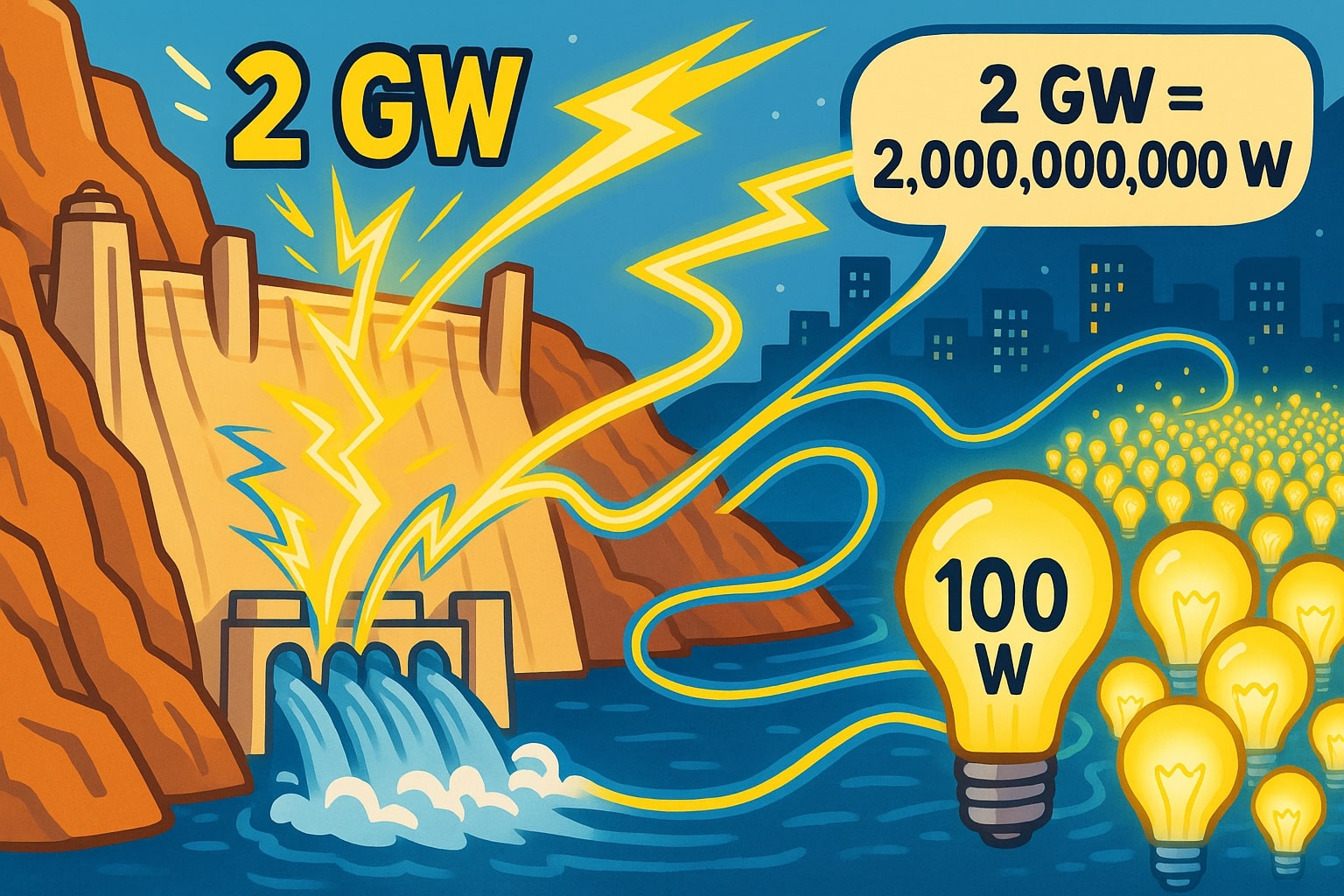gigawatt to watt – How to convert GW to W
The gigawatt (GW) measures massive amounts of power, usually on the scale of power plants and national grids. The watt (W), on the other hand, is the smallest standard unit of power we encounter in daily life — from light bulbs to phone chargers. Converting gigawatt to watt lets us put the vast scale of global energy into numbers we use every day.

What is a gigawatt (GW)?
A gigawatt equals one billion watts (1,000,000,000 W). It’s used to describe power stations, renewable energy farms, or the combined demand of large cities.
What is a watt (W)?
A watt is the SI unit of power, defined as one joule per second. Everyday items like LED lamps (5–10 W), laptops (50–100 W), and microwaves (1000 W) are measured in watts.
How to convert gigawatt to watt
Watt (W) = Gigawatt (GW) × 1,000,000,000
Example:
Watt = 2 GW × 1,000,000,000 = 2,000,000,000 W
For fast results, you can use the Conversion Tools on Jetcalculator. You’ll also find other handy utilities like the Speed Converter.
Do you know?
-
About gigawatt: The entire country of Switzerland consumes around 8 GW of power on average — that’s 8,000,000,000 W.
-
About watt: The first practical light bulb created by Thomas Edison in 1879 used about 16 W — tiny compared to today’s gigawatt-scale grids.
The Hoover Dam in Watts
The Hoover Dam, completed in 1936, is one of the most iconic engineering projects in the world. Its hydroelectric plant generates around 2 GW at peak output. When converted, that equals 2,000,000,000 W.
Thinking of Hoover Dam’s capacity in watts makes the number relatable. That’s enough energy to power roughly 20 million 100-Watt light bulbs at once. By switching from gigawatts to watts, we can connect the abstract scale of giant power plants to the everyday appliances in our homes.

From Grids to Gadgets
The formula is simple: multiply gigawatts by one billion. But converting gigawatt to watt is more than arithmetic. It helps us compare the power of massive infrastructure with the tiny devices we use every day. From Hoover Dam’s turbines to the smartphone in your hand, this conversion shows how one universal unit ties together the extremes of energy.

